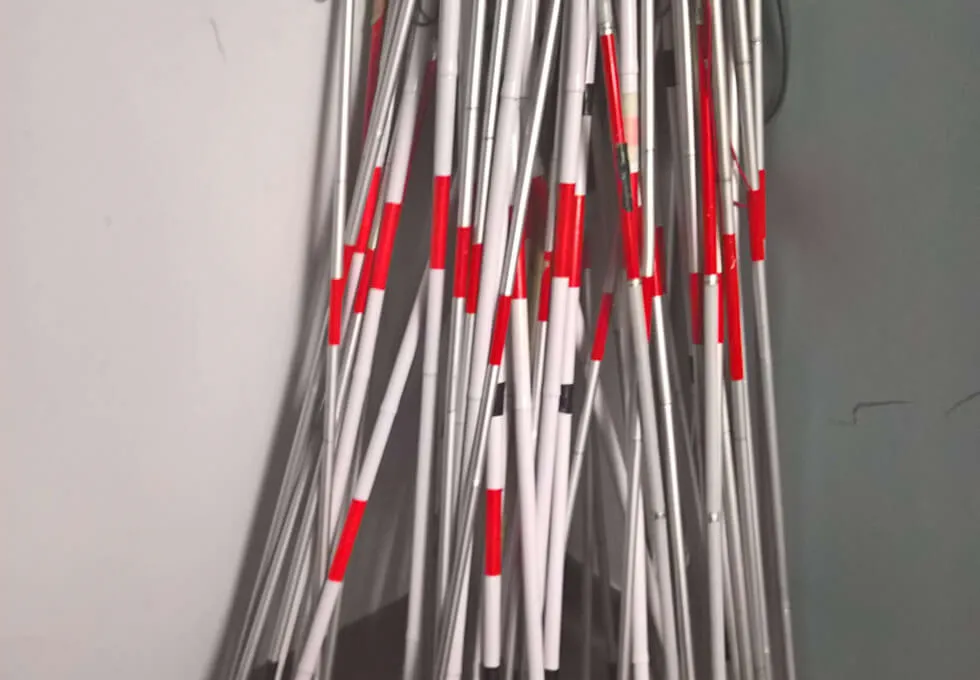If you are visually impaired or blind (or caring for someone who is), modifying your house to fit your specific needs can make all the difference. As a matter of fact, home modifications can allow you to move around more easily and complete day to day tasks in less time. Increasingly, home modifications are acknowledged as ways of removing barriers to function and increasing independence for the blind and visually impaired.
If you or your loved one’s vision is gradually diminishing, you can start making these changes ahead of time for added convenience. If the vision loss is sudden or you have a child that is visually impaired, there are adaptive techniques you can learn to help your days go by smoothly. We’ve covered some steps in our other blog post to help you get started.
Also, be sure to check out our friends at hireahelper.com who has a collection of blog posts on DIY projects to get your stuff together better with organizational pro-tips.
Home Modifications for Those Living with Total Sight Loss in Both Eyes
There will be some additional unique procedures that you will need to implement if you or your loved one are fully blind. (Of course, the inability to see light, color or form will make the lighting and contrast instructions from the other blog post impractical). Moreover, there are also extra precautions you will need to take to stay safe and organized in your house.
Nevertheless, there are still plenty of inexpensive, simple ways to make your house safer and more livable.
Remove Obstacles and Hazards
As with those who have low vision, people who are fully blind will want to remove as many trip hazards and obstacles as possible. Things should always be placed in the same spot, and you should make sure your family follows these house rules whenever possible. Other tips to keep yourself safe from hazards at home include:
- Install a phone entry system for your front door so that you can speak to anyone who comes to it.
- Avoid having any low-hanging lamps or other obstacles you could bump your head on.
- Keep furniture in the same place at all times and instruct family members to do the same.
- Identify spots throughout your home where you can put your walking cane down and easily retrieve it again.
- Keep anything that can be easily knocked off a table away from the edges, perhaps avoid having too many lamps, art or breakable sculptures.
- Label all medicines and any unidentifiable food with braille labels.
- Keep any cleaning products in a safe cabinet and ensure each product is properly labeled. It can be handy to keep these in a completely separate spot from the food products to avoid contamination.
- Avoid having a flat-topped stove in your kitchen. Your stove should have a change of texture to indicate where the burner is located. If possible, avoid easy to turn knobs on the stove and oven.
- Install handrails in the bathroom, by the tub, in the shower and down the side of any stairs in your house.
- Close closet and cupboard doors as soon as you are done with them (and have your family do the same).

Install Safe Flooring
Installing safe, non-slip flooring throughout your home is one of the best things you can do for your safety. Nowadays, there are even tactile warning strips and tiles to help you navigate throughout your house with ease. Our friends at Tarkett sell tactile strips that suits your every needs throughout your home modification journey.
Here are some things you can do to your floor to keep you safe:
- Install warning textiles in front of doorways or changes in level throughout the home.
- Install tactile strips along routes you often take in the house. This will make it more convenient to get around!
- Take away any area rugs or, if you prefer to have them, ensure they are taped down properly.
- Avoid slick surfaces in areas like the kitchen and bathroom. Have a bath-mat (or several) in the bathroom at all times.

Give Your Home a Tactile Effect
Adding tactile elements to your interior design can help you use your sense of touch to navigate your house with ease. There are several things you can keep in mind when designing your home or that you can easily modify after the fact. You should:
- Buy furniture that has textured upholstery. This will allow you to recognize furniture in different rooms by their texture.
- Use tactile markers in your kitchen and bathroom to let you know where things are located and when to use caution. Check out MaxiAids and their wide range of tactile markers.
- Use embossed letter stickers to help you distinguish between different things. For example, an “F” could let you know you are turning on the living room fan.
- Mark toothbrushes or other important items with rubber bands or other tactile aids so that you can easily identify them.
- Use braille labels for anything that needs special identification.
If your home modifications are going to be major, we recommend checking with your occupational therapist to see what they recommend before setting in on any home renovations.
Home adaptations for visual impairments are meant to enhance your home and make it easy for you to do the daily tasks you need to do. We hope you found some of our ideas helpful and they make a positive difference in your life.
Till next time.
BAWA Cane, a clip-on device, aims at minimizing collision with obstacles. By using advanced technology that is typically used for other purposes to enrich the lives of the blind and visually impaired with a digital smart white cane to detect almost any obstacle that could cause problems. This instills more confident while moving around in unfamiliar surroundings.
Facts and Guide
How to cope with falling over due to blindness?
Make Hackathon
BAWA Cane at Infineon LG Make Hackathon
Facts and Guide
How to pick the correct length of a white cane for a blind person?



